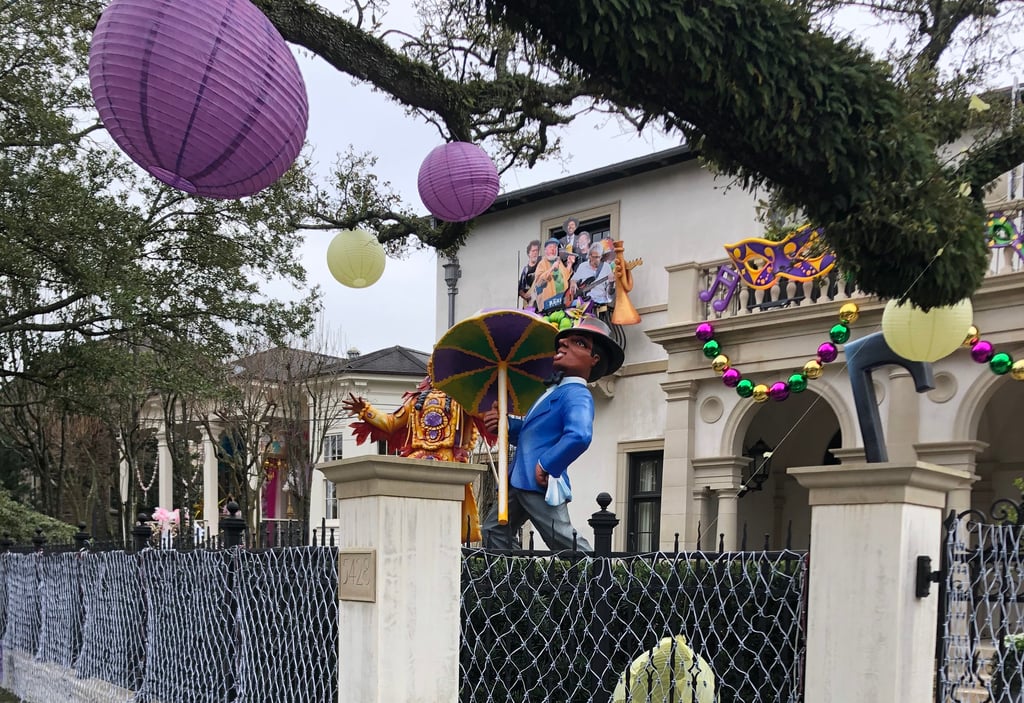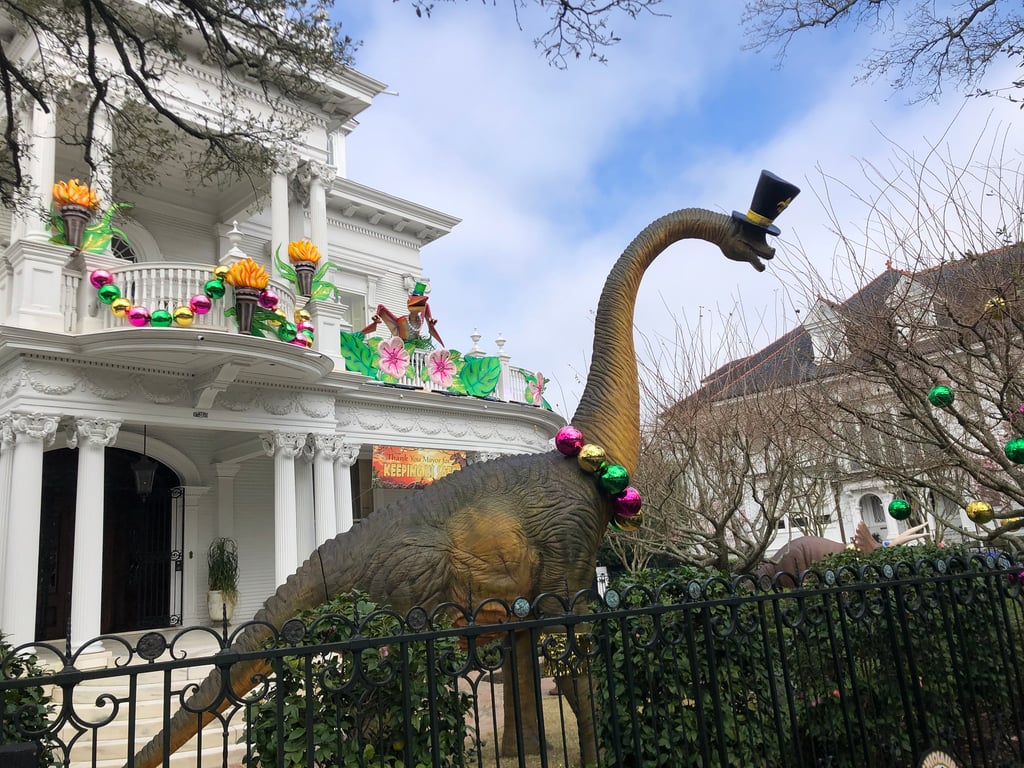People across the Big Easy are decorating their homes in lieu of traditional carnival celebrations and leaving beads and other Mardi Gras throws on front porches for passersby.
NEW ORLEANS (CN) — Mardi Gras on a typical year brings elaborate citywide parades and oceans of people leading up to Fat Tuesday, when the party concludes at midnight with mounted police going from bar to bar extinguishing lights and shutting the revelry down.
Typically, in the Christian tradition, this season of bacchic eating, drinking and merrymaking lasts from Three Kings Day on Jan. 6 right up until midnight on Fat Tuesday, also known as Mardi Gras Day, then gives way to Ash Wednesday and a 40-day period of Lent that culminates with Easter.
But this year, New Orleans has canceled parades, shuttered bars and banned crowds amid fears of Mardi Gras becoming a Covid-19 superspreader event for a second year in a row. Mardi Gras 2020 is now blamed for the transmission of 50,000 cases of coronavirus, possibly all from a single source.
On Feb. 6, following what New Orleans Mayor Latoya Cantrell described as “unacceptable” crowds on Bourbon Street the weekend before, she announced an order to close all indoor and outdoor bars and banned to-go drinks beginning Friday, Feb. 12 through Ash Wednesday, Feb. 17.
Coinciding with bar closures, the extreme cold front that created sub-zero temperatures and rolling blackouts throughout much of the U.S. descended upon New Orleans on Friday, with the crescendo of the cold snap bearing down upon the Big Easy on Mardi Gras Day morning as frosty temperatures hovered right around 27 degrees Fahrenheit.
“The weather is cooperating with the mayor,” a 30-year-old woman who asked not to be named said Thursday as she attended a socially distanced meet up with friends at the Mississippi riverfront at Crescent Park.

“It’s like together they’re saying, ‘Y’all stay home,” she added while watching ominous-looking waves of fog roll in across the river in advance of the extreme cold front.
“It’s the apocalypse. I really believe we are headed to apocalypse,” said another woman at the river.
This is Mardi Gras Day 2021: No parades, no bars, no to-go drinks, no congregating, no dancing in the streets, and a statewide state of emergency declaration over freezing temperatures. There is one bright spot, however: house floats.
When parades were officially cancelled throughout New Orleans back in November, the house float was born. Residents throughout the city have decorated their houses, and some have even prepared Mardi Gras throws – traditionally beads or other trinkets, though in some cases they may even be adult drinks or toys – and are either leaving them on front porches or tossing them from balconies at passersby.
According to the official Krewe of House Floats map, there are now currently 3,000 house floats, most of them within the city of New Orleans, but others have blossomed across the country in 40 states. Many are referring to this year’s festivities as “Yardi Gras.”
The number one priority of house floats is safety, according to the Krewe of House Floats founder Megan Boudreaux, 38.
The association does not sponsor large gatherings or official tours, Bourdreux told NPR. Instead, locals are encouraged to check out the house floats, either on foot or by car, on their own time.
“The pandemic is raging throughout the whole country,” Boudreaux said. “It would be irresponsible of us to say, ‘Yeah, please come visit New Orleans.’ We want people to be safe.”
House floats will stay up throughout the next week.
Although New Orleans’ cancellation of parades and bar closures might feel unprecedented, Mardi Gras has occasionally been called off throughout the years, according to History.com. Since 1857, the celebration has been canceled roughly a dozen times, mostly due to World War I and II but also during the 1870s yellow fever outbreak.
The last time it was called off completely was in 1945. Following Hurricane Katrina in 2005, which left 1,800 dead, the city held a muted version of the traditional carnival.

Subscribe to Closing Arguments
Sign up for new weekly newsletter Closing Arguments to get the latest about ongoing trials, major litigation and hot cases and rulings in courthouses around the U.S. and the world.











